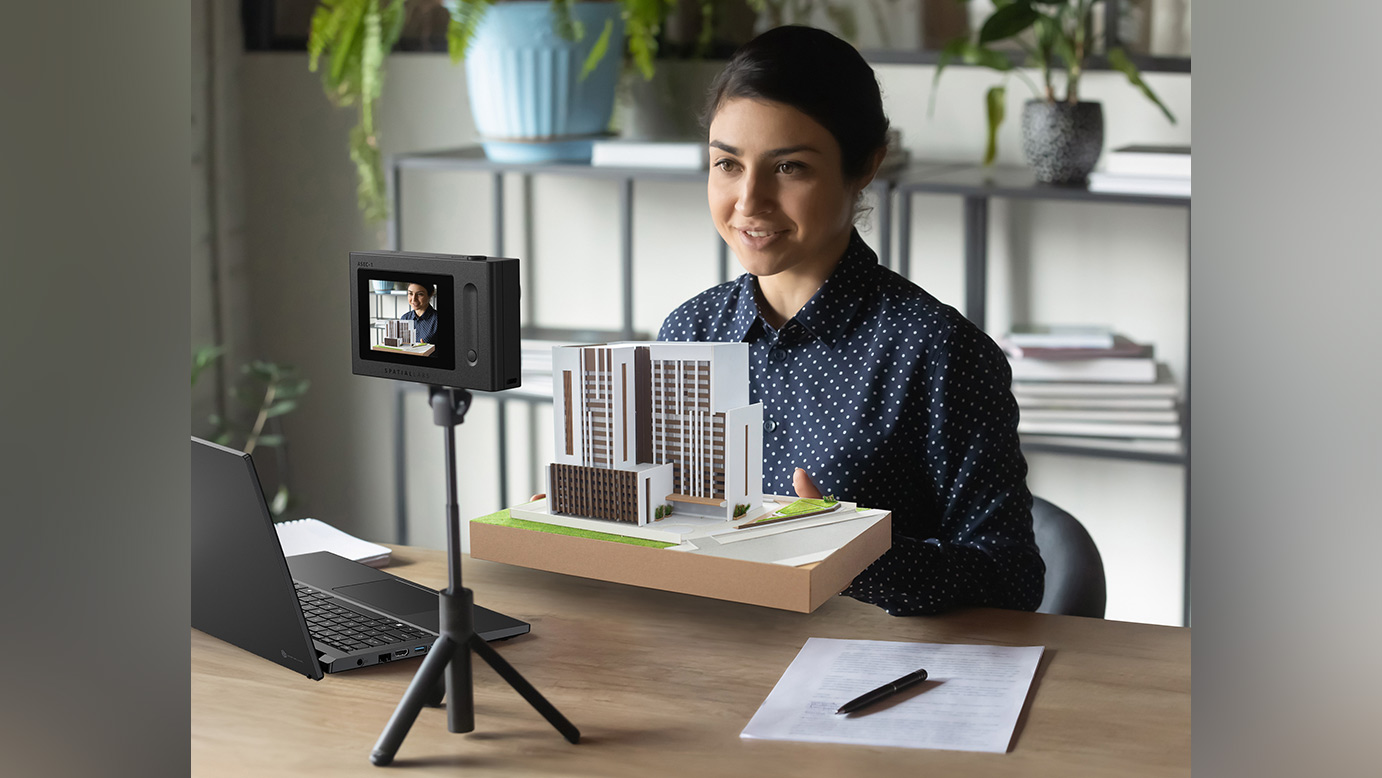Acer's new camera can livestream 3D video and it's designed for photographers!
Stereoscopic 3D is the next big thing and the camera to lead the way is coming from a brand you associate with laptops?

The Acer SpatialLabs Eyes Stereo Camera is a new camera with two lenses positioned apart, just like eyes, to capture a stereoscopic 3D image.
The device is a straightforward 'box' design, with two eight-megapixel cameras, a weatherproof design, EIS, and a 'manual mode'.
It is designed to provide 'eyes' to Acer's existing range of 3D products – monitors and laptops which have 3D displays which don't need glasses.
Acer's SpatialLabs tech relies on a lenticular monitor, but the technology has moved on a long way from the ridged screens over static images you might remember from years ago (or the Nintendo 3DS).
Acer's screens use eye-tracking cameras to ensure the correct image is projected, allowing the user a certain amount of movement.
There are still limitations. There are four apps that make up the SpatialLabs suite, all for Windows, so Mac users won't be able to take advantage. Each requires switching to full screen; the 4K monitors work on a SBS (side by side) approach, which is – in so far as any 3D system is – well-recognised. What that means is video is sent as two side-by-side images; a side-effect in YouTube for a long while was messed-up control icons.
The result, though, is that (in person) objects can appear to be about 10cm / 3-inches closer to you than the surface of the screen itself.
The best camera deals, reviews, product advice, and unmissable photography news, direct to your inbox!
Ok, so the camera...
The camera lenses have an aperture of f/2 with a 21mm EFL. Together the provide an 80-degree horizontal and 52-degree vertical field of view. The 'eyes' are 63mm apart, similar to human eyes, and each possesses a 1/2.8-inch CMOS sensor.
These deliver a photo resolution of 7680 x 2160 SBS, or a 30fps video at the same resolution (or 60fps at 3840 x 2160). This lower resolution is also available for stereo webcam and for a 30fps HDR mode.
The back of the camera sports a 2.41-inch touchscreen, though there is also a 'built-in selfie mirror' so the camera can be aimed for meetings and the like.
The camera does a boast 6-axis gyro for image stabilization, and a light 220g weight (perhaps as it only has 37 minutes of recording time untethered).
These specs suggest that when Acer say 'designed for photographers' they're using a modern take on the term, very video and streaming bias, but at least the lenses are appropriate positioned (though it is interesting that the EFL is narrower than the 42mm you might expect – presumably this is to allow the user to 'frame' themselves/their subject).
The device's uses aren't as niche as you might imagine either; 3D content is increasingly standardized (so much so it's a barely mentioned feature of plenty of TVs). Anything which can handle a video feed can, in theory, handle SBS video, so 3D video calling on Teams, Zoom, and Google Meet are cited by Acer as practical uses.
This, admittedly, is something customers will need to wait for, until another SpatialLabs widget comes along, promised for Q3 this year, but then the camera itself won't go on sale in Q3 for US$549.
Until then, it is a good reminder that innovations in photography aren't all being led by traditional photography brands. Sure, faster focusing and eye-tracking are exciting but they're improvements – but this is a markedly different approach but one which might yet take-off given the impetus coming from the many AR and VR products. This is a more complete example, but Apple Spatial Video can already be recorded on some iPhones, so Acer isn't alone here.
If you're interested in 3D, have you considered the best 360-degree cameras?

With over 20 years of expertise as a tech journalist, Adam brings a wealth of knowledge across a vast number of product categories, including timelapse cameras, home security cameras, NVR cameras, photography books, webcams, 3D printers and 3D scanners, borescopes, radar detectors… and, above all, drones.
Adam is our resident expert on all aspects of camera drones and drone photography, from buying guides on the best choices for aerial photographers of all ability levels to the latest rules and regulations on piloting drones.
He is the author of a number of books including The Complete Guide to Drones, The Smart Smart Home Handbook, 101 Tips for DSLR Video and The Drone Pilot's Handbook.

